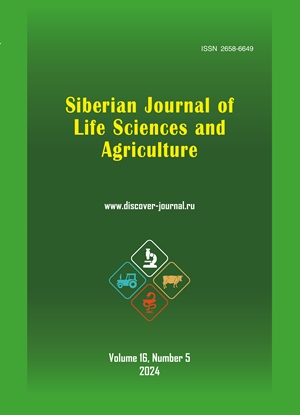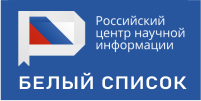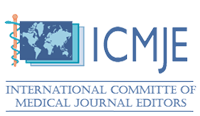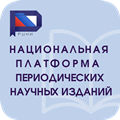ОЦЕНКА ВЛИЯНИЯ КЛИМАТИЧЕСКИХ ФАКТОРОВ НА ПОКАЗАТЕЛИ КАЧЕСТВА ВИНОГРАДА КРАСНЫХ СОРТОВ
Аннотация
Тепло- и влагообеспеченность являются ключевыми климатическими параметрами, определяющими возможность и эффективность выращивания сельскохозяйственных культур, в том числе винограда. Изменение климата обусловливает значительную неопределенность не только в отношении потенциальных адаптационных возможностей виноградных растений, но и перспектив развития виноградарства в целом.
Ещё большее значение эта проблема приобретает в условиях глобального изменения климата, поскольку данный процесс может приводить к смещению ареалов качественного виноградарства и виноделия
Исследование закономерностей влияния климатических факторов на продуктивность виноградных насаждений и качественные характеристики сырья и конечной продукции позволят оптимизировать эффективность использования природных ресурсов и снизить негативное влияние климатических изменений на сельскохозяйственное производство.
Цель – изучение влияния климатических факторов на биохимические и физико-химические показатели винограда красных сортов.
Материалы и методы. Объектом исследования служил виноград красных сортов Бастардо магарачский и Каберне Совиньон, произрастающий в разных в виноградо-винодельческих районах Крыма. В качестве климатических индексов, характеризующих тепло- и влагообеспеченность территории, использовали сумму осадков с начала вегетационного периода до сбора урожая, сумму осадков за последний месяц до сбора урожая, гидротермический коэффициент Селянинова, а также сумму активных температур выше 10 °С (∑ Т°С10), гелиотермический индекс Хуглина (HI), индекс Уинклера (WI), среднюю температуру воздуха с начала вегетационного периода до сбора урожая (tвег), среднюю температура воздуха за последний месяц до сбора урожая (tмес), индекс холодных ночей (CI). Для оценки углеводно-кислотного комплекса винограда применяли показатели: массовая концентрация сахаров, титруемых кислот, яблочной кислоты.
Результаты и заключение. Проведена оценка распределения климатических факторов, характеризующих различные виноградо-винодельческие районы Крыма, а также их влияния на качественные характеристики сырья. Установлено, что Горно-долинно-приморский и Горно-долинный виноградо-винодельческие районы характеризуются более высокими значениями индексов Уинклера и Хуглина (на 354-435 и 97-124 единиц соответственно), чем Крымский западно-приморский предгорный район и г. Севастополь. Аналогичная тенденция отмечена и в отношении показателей tмес, tвег и CI. Установлена линейная зависимость массовой концентрации сахаров в ягоде от уровня теплообеспеченности региона произрастания винограда за вегетационный период (rwi = 0,73). Установлено корреляционную зависимость между Рвег и массовой концентрацией яблочной кислоты в ягоде (r= 0.88-0.9). Установленные закономерности позволят энологам на основании метеоданных прогнозировать качественные показатели будущего урожая и заблаговременно планировать технологические аспекты переработки винограда для получения винопродукции высокого качества.
Информация о спонсорстве. Работа выполнялась в рамках НИР по теме «Разработка методологии интеллектуального автоматизированного мониторинга для решения задач в области виноделия и виноградарства» ГЗ № FNZM-2022-0010.
Скачивания
Литература
Список литературы
Ионова Е.В., Лиховидова В.А., Лобунская И.А. Засуха и гидротермический коэффициент увлажнения как один из критериев оценки степени ее интенсивности (обзор литературы) // Зерновое хозяйство России. 2019. № 6. С.18-22. https://doi.org/10.31367/2079-8725-2019-66-6-18-22
Мельников В.А. Оценка агроэкологических условий западной части Южного берега Крыма с выделением микрозон для оптимального размещения технических сортов винограда: диссерт. на соиск. уч. степ. канд. сельскохозяйственных наук. Ялта, 2018. 200 с.
Методы технохимического контроля в виноделии / Под ред. В.Г. Гержиковой. Симферополь: Таврида, 2009. 303 с.
Потанин Д.В., Иванова М.И. Подбор элементов адаптивного садоводства в зависимости от климатического потенциала территории // Магарач. Виноградарство и виноделие. 2022. Т. 24. № 3 (121). С. 254-262. https://doi.org/10.34919/IM.2022.24.3.009
Проекции условий влагообеспеченности в Севастопольском регионе для выращивания винограда / Вышкваркова Е.В., Рыбалко Е.А., Марчукова О.В., Баранова Н.В. // Вестник РУДН. Серия: Экология и безопасность жизнедеятельности. 2022. Т. 30. № 3. С. 300–311. https://doi.org/10.22363/2313-2310-2022-30-3-300-311
Рыбалко Е.А., Баранова Н.В., Борисова В.Ю. Исследование динамики и составление прогноза пространственного распределения теплообеспеченности территории крымского полуострова // Системы контроля окружающей среды. 2019. № 3 (37). С. 96-101. https://doi.org/10.33075/2220-5861-2019-3-96-101
Рыбалко Е.А., Баранова Н.В. Рекомендации по агроэкологической оптимизации сортового состава и терруарной специализации виноградарско-винодельческой отрасли Республики Крым. Симферополь, 2023. 72 с.
Рыбалко E., Червяк С., Ермихина M. Оценка виноградо-винодельческих районов крыма по климатическим факторам, а также их влияния на качественные характеристики винограда // Siberian Journal of Life Sciences and Agriculture. 2023. Т. 15(5). https://doi.org/10.12731/2658-6649-2023-15-5-936
Рыбалко E.A., Червяк С.Н. Климатические факторы, характеризующие влагообеспеченность территории, и их влияние на качественные показатели винограда // Siberian Journal of Life Sciences and Agriculture. 2023. Т. 15(6). https://doi.org/10.12731/2658-6649-2023-15-6-96
Сатибалов А.В. Влияние глобального потепления на региональный климат и его последствия для плодовых культур // Плодоводство и виноградарство Юга России. 2021. № 69(3). С. 101-122. https://doi.org/10.30679/2219-5335-2021-3-69-101-122
Adaptation mechanisms of grape varieties in unstable climatic conditions of the autumn-winter period / Kiseleva G., Ilina I., Sokolova V., Zaporozhets N. // BIO Web of Conferences. 2022. № 47, 06003. https://doi.org/10.1051/bioconf/20224706003
Ashenfelter O., Storchmann K. Climate change and wine: A review of the economic implications // Journal of Wine Economics. 2016. № 11(1). P. 105–138. https://doi.org/10.1017/jwe.2016.5
Assessment of the influence of foliar treatment on productivity and phenolic maturity of grapes / Levchenko S.V., Cherviak S.N., Boiko V.A., Belash D., Ostroukhova E.V., Lutkova N.Yu. // E3S Web of Conferences. 2021. № 232. Р. 03026. https://doi.org/10.1051/e3sconf/202123203026
Biasi R., Brunori E., Ferrara C., Salvati L. Assessing Impacts of Climate Change on Phenology and Quality Traits of Vitis vinifera L.: The Contribution of Local Knowledge // Plants. 2019. Vol. 8(5), 121 https://doi.org/10.3390/plants8050121
Climate Change Contributes to Water Scarcity / H. Assaf, W. Erian, R. Gafrej, S. Herrmann, R.A. McDonnell, A. Taimeh // Adaptation to a Changing Climate in the Arab Countries. World BankEditors: Dorte Verner, 2012. P. 108-151.
Cornelis van Leeuwen and Benjamin Bois. Update in unified terroir zoning methodologies // E3S Web of Conferences. 2018. Vol. 50, 01044. https://doi.org/10.1051/e3sconf/20185001044
Crupi P., Alba V., Gentilesco G., Gasparro M., Ferrara G., Mazzeo A., Coletta A. Viticultural Climate Indexes and Their Role in The Prediction of Anthocyanins and Other Flavonoids Content in Seedless Table Grapes // Horticulturae. 2024. Vol. 10(1), 28. https://doi.org/10.3390/horticulturae10010028
Fernandes de Oliveira A., Mercenaro L., Nieddu G. Assessing thermal efficiency for berry anthocyanin accumulation in four different sites and field-growing conditions // Acta Hortic. 1188. ISHS 2017. https://doi.org/10.17660/ActaHortic.2017.1188.24
Fraga H. Climate Change: A New Challenge for the Winemaking Sector // Agronomy. 2020. Vol. 10, 1465. https://doi.org/10.3390/agronomy10101465
Gambetta G. A., Kurtural S. K. Global warming and wine quality: are we close to the tipping point? // OENO One. 2021. Vol 55 (3). P. 353-361. https://doi.org/10.20870/oeno-one.2021.55.3.4774
Gregory A. Gambetta Water Stress and Grape Physiology in the Context of Global Climate Change // Journal of Wine Economics. 2016. Vol. 11(1). P. 168-180 https://doi.org/10.1017/jwe.2015.16
Hunter J.J., Bonnardot V. Suitability of Some Climatic Parameters for Grapevine Cultivation in South Africa, with Focus on Key Physiological Processes // S. Afr. J. Enol. Vitic. 2011. Vol. 32(1). P. 137-154. DOI:10.21548/32-1-1374
Jones G.V., Reid R., Vilks A. Climate, grapes, and wine: structure and suitability in a variable and changing climate // The Geography of Wine. 2011. P. 109–133. https://doi.org/10.1007/978-94-007-0464-0_7
Leeuwen C. van, Darriet Ph.The Impact of Climate Change on Viticulture and Wine Quality Journal of Wine Economics. 2016. Vol. 11(1). P. 150–167. https://doi.org/10.1017/jwe.2015.21
Lopes C.M., Egipto R., Pedroso V., Pinto P.A., Braga R., Neto M. Can berry composition be explained by climatic indices? Comparing classical with new indices in the Portuguese Dao region // ActaHortic. 2017. 1157. https://doi.org/10.17660/ActaHortic.2017.1157.10
Novikova L., Naumova L. Dependence of Fresh Grapes and Wine Taste Scores on the Origin of Varieties and Weather Conditions of the Harvest Year in the Northern Zone of Industrial Viticulture in Russia // Agronomy. 2020. Vol. 10, 1613. https://doi.org/10.3390/agronomy10101613
Oana Arina Antoce, Georgeta Mihaela Bucur, George Adrian Cojocaru. The climate change influences and trends on the grapevine growing in Southern Romania: a long-term study // Вook of abstracts 42nd Congress of Vine and Wine, 17th General Assembly of the OIV 15th-19th July 2019, CICG, Geneva, Switzerland. Р.43–44.
Ostroukhova E., Rybalko E., Levchenko S., Boyko V., Belash D., Viugina M. Relationship between agro-ecological resources of vineyards and the anthocyanins complex in berries // E3S Web of Conferences. 2021. Vol. 247, 01013. https://doi.org/10.1051/e3sconf/202124701013
Roediger AHA Phenolic ripeness in South Africa / Assignment submitted in partial requirement for Cape Wine Masters Diploma. Stellenbosch, 2006. 97 р.
Shrestha S., Babel M.S., Pandey V.P. Climate change and water resources. Boca Raton: CRC Press, 2014, 376 р. https://doi.org/10.1201/b16969
Use of a flor velum yeast for modulating colour, ethanol and major aroma compound contents in red wine / Moreno J., Moreno-García J., López-Muñoz B., Carlos Mauricio J., García-Martínez T. // Food Chemistry. 2016. Vol. 15(213). P. 90-97. https://doi.org/10.1016/j.foodchem.2016.06.062
Van Leeuwen C. Terroir: The effect of the physical environment on vine growth, grape ripening and wine sensory attributes // Managing Wine Quality (Second Edition), Volume One: Viticulture and Wine Quality, Woodhead Publishing Series in Food Science, Technology and Nutrition. 2022. P. 341-393. https://doi.org/10.1016/B978-0-08-102067-8.00005-1
Van Leeuwen C., Schultz H., de Cortazar-Atauri I. G., Duchêne E., Ollat N., Pieri Ph., Bois B., Goutouly J.-P., Quénol H., Touzard J.-M., Malheiro A., Bavaresco L., Delrot S. Why climate change will not dramatically decrease viticultural suitability in main wine-producing areas by 2050 // Proc Natl Acad Sci U S A. 2013. Vol. 110(33). P. E3051-2. https://doi.org/10.1073/pnas.1307927110
Vine water status is a key factor in grape ripening and vintage quality for red Bordeaux wine: How can it be assessed for vineyard management purposes? / Leeuwen van C., Tregoat O., Choné X., Bois B., Pernet D., Gaudillère J.P. // Journal International des Sciences de la Vigne et du Vin. 2009. Vol. 43. P. 121-134.
Vyshkvarkova E.V., Rybalko E.A. Forecast of Changes in Air Temperatures and Heat Indices in the Sevastopol Region in the 21st Century and Their Impacts on Viticulture // Agronomy. 2021. Vol. 11(5), 954 https://doi.org/10.3390/agronomy11050954
Wang S.Y., Zheng G.F., Li X., Yang J.L., Zhang X.Y., Li J.P., Ma L.W. Impact of climate warming on heat resources and freezing injuries in wine grapes at the east foot of the Helan Mountains of Ningxia. Shengtai Xuebao // Acta Ecologica Sinica. 2017. Vol. 37(11). P. 3776–3786. https://doi.org/10.5846/stxb201604180721
Yang W.,Zhu J., van Leeuwen C., Dai Zh., Gambetta G. A. GrapevineXL reliably predicts multi-annual dynamics of vine water status, berry growth, and sugar accumulation in vineyards // Horticulture Research. 2023. Vol. 10, Issue 6. https://doi.org/10.1093/hr/uhad071
References
Ionova E.V., Lihovidova V.A., Lobunskaja I.A. Zasuha i gidrotermicheskij kojefficient uvlazhnenija kak odin iz kriteriev ocenki stepeni ee intensivnosti (obzor literatury). Zernovoe hozjajstvo Rossii, 2019, no. 6, pp. 18-22. https://doi.org/10.31367/2079-8725-2019-66-6-18-22
Melnikov V.A. Evaluation of agroecological conditions of the western part of the Southern coast of Crimea with the allocation of microzones for optimal placement of technical grape varieties: dissertation for a thesis for the degree of Candidate of Agricultural Sciences. Yalta, 2018, 200 p.
Metody tehnohimicheskogo kontrolja v vinodelii [Methods of technochemical control in winemaking] / ed. V.G. Gerzhikova. Simferopol: Tavrida, 2009, 303 p.
Potanin D.V., Ivanova M.I. Magarach. Vinogradarstvo i vinodelie [Magarach. Viticulture and winemaking], 2022, vol. 24, no. 3 (121), pp. 254-262. https://doi.org/10.34919/IM.2022.24.3.009
Vyshkvarkova E.V., Rybalko E.A., Marchukova O.V., Baranova N.V. Vestnik RUDN. Serija: Jekologija i bezopasnost' zhiznedejatel'nosti, 2022, vol. 30, no. 3, pp. 300–311. https://doi.org/10.22363/2313-2310-2022-30-3-300-311
Rybalko E.A., Baranova N.V., Borisova V.Ju. Sistemy kontrolja okruzhajushhej sredy, 2019, no. 3 (37), pp. 96-101. https://doi.org/10.33075/2220-5861-2019-3-96-101
Rybalko E.A., Baranova N.V. Recommendations on agroecological optimization of varietal composition and terroir specialization of winegrowing and wine-making industry of the Republic of Crimea. Simferopol, 2023, 72 p.
Rybalko E., Chervjak S., Ermihina M. Siberian Journal of Life Sciences and Agriculture, 2023, vol. 15(5). https://doi.org/10.12731/2658-6649-2023-15-5-936
Rybalko E.A., Chervjak S.N. Siberian Journal of Life Sciences and Agriculture, 2023, vol. 15(6). https://doi.org/10.12731/2658-6649-2023-15-6-96
Satibalov A.V. Plodovodstvo i vinogradarstvo Juga Rossii, 2021, no. 69(3), pp. 101-122. https://doi.org/10.30679/2219-5335-2021-3-69-101-122
Kiseleva G., Ilina I., Sokolova V., Zaporozhets N. Adaptation mechanisms of grape varieties in unstable climatic conditions of the autumn-winter period. BIO Web of Conferences, 2022, no. 47, 06003. https://doi.org/10.1051/bioconf/20224706003
Ashenfelter O., Storchmann K. Climate change and wine: A review of the economic implications. Journal of Wine Economics, 2016, vol. 11(1), pp. 105–138. https://doi.org/10.1017/jwe.2016.5
Levchenko S.V., Cherviak S.N., Boiko V.A., Belash D., Ostroukhova E.V., Lutkova N.Yu. E3S Web of Conferences, 2021, vol. 232, 03026. https://doi.org/10.1051/e3sconf/202123203026
Biasi R., Brunori E., Ferrara C., Salvati L. Assessing Impacts of Climate Change on Phenology and Quality Traits of Vitis vinifera L.: The Contribution of Local Knowledge. Plants, 2019, vol. 8(5), 121. https://doi.org/10.3390/plants8050121
Assaf H., Erian W., Gafrej R., Herrmann S., McDonnell R.A., Taimeh A. Adaptation to a Changing Climate in the Arab Countries. World BankEditors: Dorte Verner, 2012, pp.108-151.
Cornelis van Leeuwen and Benjamin Bois. Update in unified terroir zoning methodologies. E3S Web of Conferences, 2018, vol. 50, 01044. https://doi.org/10.1051/e3sconf/20185001044
Crupi P., Alba V., Gentilesco G., Gasparro M., Ferrara G., Mazzeo A., Coletta A. Viticultural Climate Indexes and Their Role in The Prediction of Anthocyanins and Other Flavonoids Content in Seedless Table Grapes. Horticulturae, 2024, vol. 10(1), 28. https://doi.org/10.3390/horticulturae10010028
Fernandes de Oliveira A., Mercenaro L., Nieddu G. Assessing thermal efficiency for berry anthocyanin accumulation in four different sites and field-growing conditions. Acta Hortic, 2017, 1188. https://doi.org/10.17660/ActaHortic.2017.1188.24
Fraga H. Climate Change: A New Challenge for the Winemaking Sector. Agronomy, 2020, vol. 10, 1465. https://doi.org/10.3390/agronomy10101465
Gambetta G. A., Kurtural S. K. Global warming and wine quality: are we close to the tipping point? OENO One, 2021, vol. 55 (3), pp. 353-361. https://doi.org/10.20870/oeno-one.2021.55.3.4774
Gregory A. Gambetta Water Stress and Grape Physiology in the Context of Global Climate Change. Journal of Wine Economics, 2016, vol. 11(1), pp. 168-180. https://doi.org/10.1017/jwe.2015.16
Hunter J.J., Bonnardot V. Suitability of Some Climatic Parameters for Grapevine Cultivation in South Africa, with Focus on Key Physiological Processes. S. Afr. J. Enol. Vitic., 2011, vol. 32(1), pp. 137-154. https://doi.org/10.21548/32-1-1374
Jones G.V., Reid R., Vilks A. Climate, grapes, and wine: structure and suitability in a variable and changing climate. The Geography of Wine, 2011, pp. 109–133. https://doi.org/10.1007/978-94-007-0464-0_7
Leeuwen C. van, Darriet Ph.The Impact of Climate Change on Viticulture and Wine Quality. Journal of Wine Economics, 2016, vol. 11(1), pp. 150–167. https://doi.org/10.1017/jwe.2015.21
Lopes C.M., Egipto R., Pedroso V., Pinto P.A., Braga R., Neto M. Can berry composition be explained by climatic indices? Comparing classical with new indices in the Portuguese Dao region. ActaHortic., 2017, 1157. https://doi.org/10.17660/ActaHortic.2017.1157.10
Novikova L., Naumova L. Dependence of Fresh Grapes and Wine Taste Scores on the Origin of Varieties and Weather Conditions of the Harvest Year in the Northern Zone of Industrial Viticulture in Russia. Agronomy, 2020, vol. 10, 1613. https://doi.org/10.3390/agronomy10101613
Oana Arina Antoce, Georgeta Mihaela Bucur, George Adrian Cojocaru. The climate change influences and trends on the grapevine growing in Southern Romania: a long-term study. Вook of abstracts 42nd Congress of Vine and Wine, 17th General Assembly of the OIV 15th-19th July 2019, CICG, Geneva, Switzerland, pp. 43–44.
Ostroukhova E., Rybalko E., Levchenko S., Boyko V., Belash D., Viugina M. Relationship between agro-ecological resources of vineyards and the anthocyanins complex in berries. E3S Web of Conferences, 2021, vol. 247, 01013. https://doi.org/10.1051/e3sconf/202124701013
Roediger AHA Phenolic ripeness in South Africa / Assignment submitted in partial requirement for Cape Wine Masters Diploma. Stellenbosch, 2006, 97 р.
Shrestha S., Babel M.S., Pandey V.P. Climate change and water resources. Boca Raton: CRC Press, 2014, 376 р. https://doi.org/10.1201/b16969
Use of a flor velum yeast for modulating colour, ethanol and major aroma compound contents in red wine / Moreno J., Moreno-García J., López-Muñoz B., Carlos Mauricio J., García-Martínez T. Food Chemistry, 2016, vol. 15(213), pp. 90-97. https://doi.org/10.1016/j.foodchem.2016.06.062
Van Leeuwen C. Terroir: The effect of the physical environment on vine growth, grape ripening and wine sensory attributes / Managing Wine Quality (Second Edition), Volume One: Viticulture and Wine Quality, Woodhead Publishing Series in Food Science, Technology and Nutrition, 2022, pp. 341-393 https://doi.org/10.1016/B978-0-08-102067-8.00005-1
Van Leeuwen C., Schultz H., de Cortazar-Atauri I. G., Duchêne E., Ollat N., Pieri Ph., Bois B., Goutouly J.-P., Quénol H., Touzard J.-M., Malheiro A., Bavaresco L., Delrot S. Why climate change will not dramatically decrease viticultural suitability in main wine-producing areas by 2050. Proc Natl Acad Sci U S A, 2013, vol. 110(33), pp. E3051-2. https://doi.org/10.1073/pnas.1307927110
Vine water status is a key factor in grape ripening and vintage quality for red Bordeaux wine: How can it be assessed for vineyard management purposes? / Leeuwen van C., Tregoat O., Choné X., Bois B., Pernet D., Gaudillère J.P. Journal International des Sciences de la Vigne et du Vin, 2009, vol. 43, pp. 121-134.
Vyshkvarkova E.V., Rybalko E.A. Forecast of Changes in Air Temperatures and Heat Indices in the Sevastopol Region in the 21st Century and Their Impacts on Viticulture. Agronomy, 2021, vol. 11(5), 954. https://doi.org/10.3390/agronomy11050954
Wang S.Y., Zheng G.F., Li X., Yang J.L., Zhang X.Y., Li J.P., Ma L.W. Impact of climate warming on heat resources and freezing injuries in wine grapes at the east foot of the Helan Mountains of Ningxia. Shengtai Xuebao. Acta Ecologica Sinica, 2017, vol. 37, I. 11, pp. 3776–3786. https://doi.org/10.5846/stxb201604180721
Yang W.,Zhu J., van Leeuwen C., Dai Zh., Gambetta G. A. GrapevineXL reliably predicts multi-annual dynamics of vine water status, berry growth, and sugar accumulation in vineyards. Horticulture Research, 2023, vol. 10, issue 6. https://doi.org/10.1093/hr/uhad071
Просмотров аннотации: 54 Загрузок PDF: 30
Copyright (c) 2024 Sofia N. Cherviak, Evgeniy A. Rybalko, Veronica A. Oleinikova, Marianna V. Ermikhina

Это произведение доступно по лицензии Creative Commons «Attribution-NonCommercial-NoDerivatives» («Атрибуция — Некоммерческое использование — Без производных произведений») 4.0 Всемирная.






















































